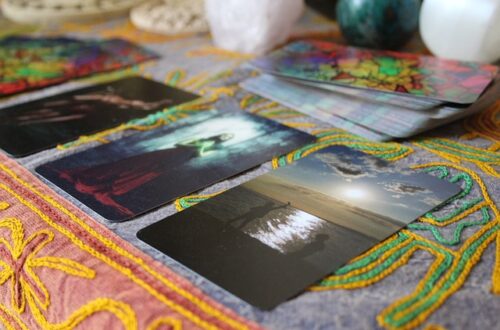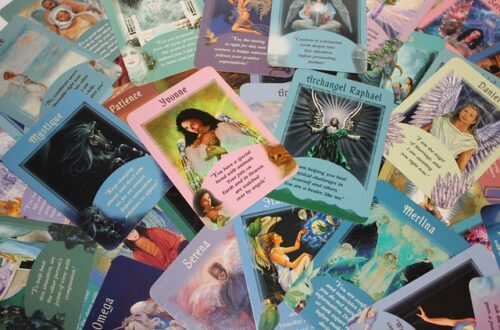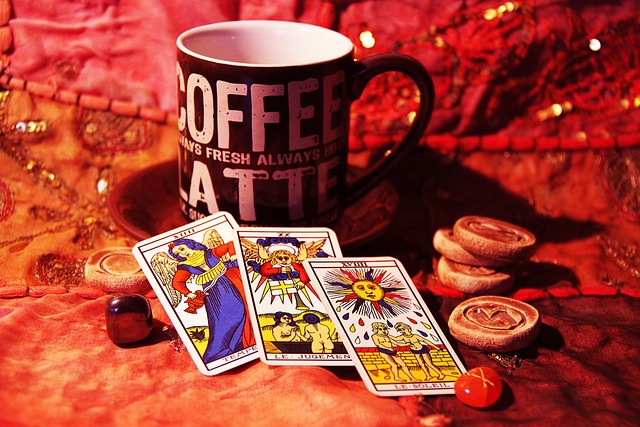
Common Tarot myths and misconceptions
Table of Contents
- Common Tarot Myths and Misconceptions
Common Tarot Myths and Misconceptions
Introduction
Tarot cards have fascinated people for centuries. Many view them as tools for divination, while others see them as mere entertainment. However, misconceptions abound. This article seeks to clarify the common myths surrounding tarot, providing insight into its true nature and purpose.
Read also: https://magical-rituals.com/blog/2025/01/10/are-voodoo-love-spells-safe/
Myth 1: Tarot is Only for Fortune Telling
One of the most prevalent misconceptions is that tarot cards are exclusively for predicting the future. While many people associate tarot readings with fortune telling, this view is overly simplistic. In reality, tarot serves multiple purposes beyond mere prediction.
Understanding the Purpose of Tarot
Tarot is primarily a tool for introspection and self-discovery. Each card represents various archetypes and themes that resonate with the human experience. By interpreting these cards, individuals can gain insight into their thoughts, emotions, and life situations. Furthermore, many practitioners emphasize that tarot can help people make informed decisions rather than merely revealing what will happen.
Exploring Personal Development
Many tarot readers focus on personal development. They believe that the cards can illuminate paths to self-awareness. Therefore, instead of predicting the future, tarot can offer guidance on personal challenges. For instance, a card drawn during a reading may encourage reflection on a relationship or career decision.
Empowerment Through Choice
Moreover, tarot emphasizes empowerment. The idea is not to dictate the future but to highlight choices. When individuals engage with the cards, they can explore potential outcomes based on their current path. Consequently, this approach fosters a sense of control over one’s destiny.
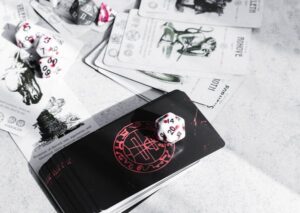
Myth 2: Only Psychics Can Read Tarot
Another common myth is that only those with psychic abilities can effectively read tarot cards. This misconception often discourages individuals from exploring tarot for themselves. In truth, anyone can learn to read tarot with practice and dedication.
Learning Tarot as a Skill
Tarot reading is a skill that can be developed over time. Many resources are available for beginners, including books, online courses, and workshops. Moreover, each card has its meanings, which can be interpreted in various ways. As a result, personal intuition plays a significant role in readings.
The Role of Intuition
While some readers may possess heightened intuitive abilities, it is not a requirement for all. Many successful tarot readers rely on their intuition alongside the meanings of the cards. By studying the cards and practicing regularly, individuals can enhance their intuitive skills. Thus, anyone with a genuine interest can become a proficient tarot reader.
Community Support and Resources
Additionally, the tarot community is supportive and welcoming. Many experienced readers are eager to share their knowledge. Online forums and local meetups provide opportunities for aspiring readers to connect and learn from one another. Consequently, this collaborative environment fosters growth and understanding.
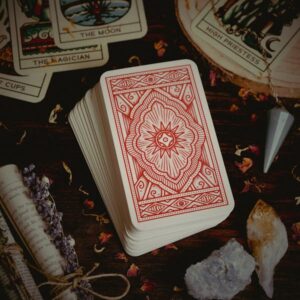
Myth 3: Tarot Cards Are Evil
Some people believe that tarot cards are linked to dark forces or evil practices. This myth often stems from misconceptions about the occult. In reality, tarot cards are neutral tools. They do not possess inherent good or evil qualities.
The Neutral Nature of Tarot
Like any tool, tarot cards reflect the intentions of the user. A reader can approach the cards with positivity or negativity. The outcomes of a reading depend largely on the mindset and energy brought to the session. Therefore, it is essential to approach tarot with an open heart and mind.
Historical Context
Historically, tarot cards originated in the 15th century as playing cards. They were not initially associated with divination. It was only later, in the 18th century, that tarot began to be used for mystical purposes. Consequently, understanding the history of tarot can help dispel myths about its supposed evil nature.
Positive Uses of Tarot
Many tarot readers use the cards for positive purposes. For instance, they can help individuals process grief, improve relationships, or find clarity in difficult situations. In this light, tarot serves as a supportive tool for personal growth and healing.
Myth 4: Tarot Readings Are Always Accurate
Another prevalent misconception is that tarot readings are always accurate. While many people find value in readings, it is crucial to understand that tarot is not an exact science. Various factors influence the accuracy of a reading.
The Subjective Nature of Tarot Readings
Tarot readings are subjective experiences. The reader’s interpretation and the querent’s mindset can significantly affect the outcome. Additionally, the questions asked during a reading play a critical role in shaping the results. As such, it is important to approach readings with realistic expectations.
Setting Intentions for Readings
For a reading to be meaningful, it is essential to set clear intentions. A well-formulated question can lead to more insightful answers. Conversely, vague or unclear questions may result in ambiguous readings. Therefore, both the reader and the querent should engage in thoughtful dialogue to clarify their objectives.
Personal Interpretation and Reflection
Moreover, personal interpretation is vital. The cards may resonate differently with each individual, leading to diverse interpretations. Readers often encourage querents to reflect on the messages received during a reading. This engagement fosters a deeper understanding of the cards and their relevance to one’s life.
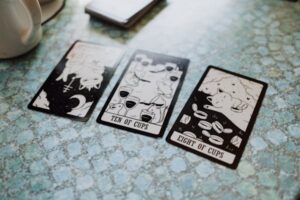
Myth 5: You Must Use Specific Decks
Many believe that only specific tarot decks can be used for readings. While some decks are more popular than others, this notion is misleading. Each tarot deck has its unique style and symbolism, and readers can choose the decks that resonate with them.
Choosing the Right Deck
When selecting a tarot deck, individuals should consider their personal preferences. Some may prefer traditional Rider-Waite decks, while others may be drawn to modern or themed decks. The key is to find a deck that inspires and connects with the reader.
The Importance of Connection
Connection to a deck is crucial. A reader who feels a strong bond with their cards is more likely to interpret them effectively. This connection can be cultivated through regular practice and exploration of the deck’s imagery and meanings.
Experimenting with Different Decks
Additionally, readers are encouraged to experiment with different decks. Each deck offers unique insights and perspectives, enriching the reading experience. As a result, many tarot enthusiasts have multiple decks in their collections, each serving different purposes and styles of reading.
Myth 6: Tarot Readings Are Only for Certain Types of People
Some individuals believe that tarot readings are only for a specific demographic, such as those interested in the occult or spirituality. This belief can create barriers for many who might benefit from tarot. In truth, tarot is for everyone, regardless of background or beliefs.
Universal Themes in Tarot
Tarot explores universal themes such as love, conflict, and personal growth. These themes resonate with individuals from all walks of life. Consequently, tarot can serve as a valuable tool for anyone seeking insight or guidance.
Inclusivity in Tarot Practice
The tarot community is increasingly inclusive. Readers from diverse backgrounds share their experiences and interpretations. This diversity enriches the practice and highlights the versatility of tarot as a tool for personal exploration. Therefore, anyone can engage with tarot without fear of judgment.
Encouraging Open-Mindedness
Ultimately, embracing open-mindedness is crucial. Those new to tarot are encouraged to approach it with curiosity. By doing so, they may discover valuable insights and perspectives that enhance their lives.
Conclusion
In summary, the world of tarot is filled with myths and misconceptions. Understanding the true nature of tarot can enhance appreciation for its depth and potential. Rather than being a tool for fortune telling, tarot serves as a means for self-reflection, empowerment, and personal growth. By dispelling these myths, individuals can explore tarot more openly and authentically.
Bibliography
- Decker, Ronald, et al. The Tarot: History, Symbolism, and Divination. Inner Traditions, 2013. ISBN: 978-1620550674.
- Greer, Rachel Pollack. 78 Degrees of Wisdom: A Book of Tarot. Weiser Books, 2003. ISBN: 978-1578631977.
- Hajo Banzhaf. Tarot and the Journey of the Hero. Destiny Books, 2016. ISBN: 978-1620554900.
- Kaplan, Stuart R. Tarot Cards for Fun and Fortune Telling. Crown Publishing Group, 1993. ISBN: 978-0517596337.
- Pollack, Rachel. The New Tarot Handbook: Master the Meanings of the Cards. Weiser Books, 2020. ISBN: 978-1578637060.
- https://en.wikipedia.org/wiki/Tarot



